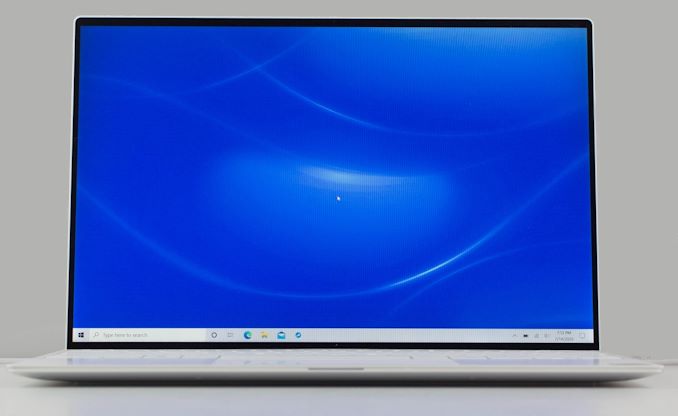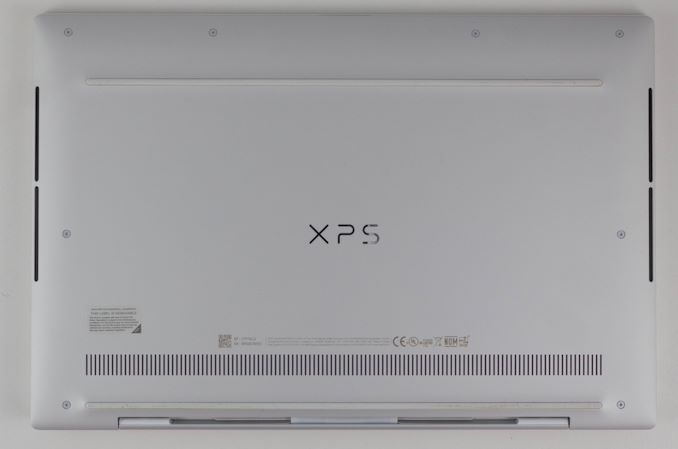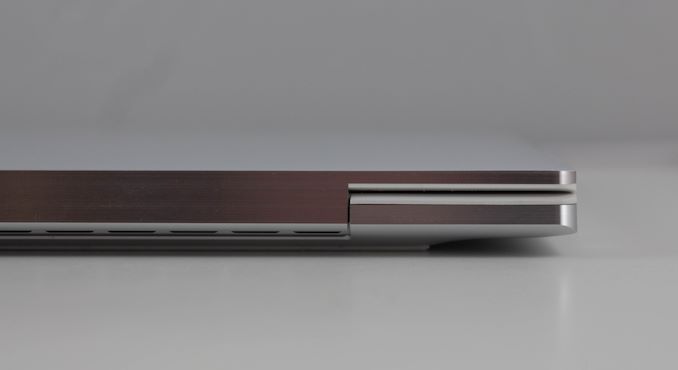The Dell XPS 13 (9300) Review: Return of the King
by Brett Howse on July 16, 2020 10:00 AM ESTFinal Words
Dell’s XPS lineup is one of the strongest in the PC industry. The InfinityEdge display was a revolution, allowing laptop sizes to shrink considerably, while providing the same display size. The new XPS 13 improves on an already excellent pedigree by moving to a 16:10 aspect ratio on the display which further reduces the bezel and keeps the new XPS 13 looking as fresh as ever.
The two color choices are both great, but the Arctic White, with its woven fiber keyboard deck, is really striking. Dell has tweaked this slightly from their original 2-in-1 design by moving back to black display borders, which can help hide the admittedly small bezels even further. The older soft-touch carbon fiber black color is still a great look as well. The refreshed XPS 13 is simply one of the nicest looking notebooks in its class.
The move to Ice Lake in the 2020 refresh is also a welcome addition, mostly thanks to the significantly improved integrated GPU performance, but also because it allows the laptop to support 32 GB of RAM. Coupled with the maximum 2 TB of SSD storage, and the XPS 13 offers plenty of performance for its size. There will be those that lament the lack of an AMD option, as AMD’s latest Renoir is a very potent platform, but the lead time on a notebook like this would preclude that option.
Dell’s decision to move to a 16:10 aspect ratio means that you get a bit more vertical space, which should be beneficial in most productivity scenarios. Of the two display options, unless the wider P3 gamut support of the 3840x2400 display is something critical for a specific workflow, the extended battery life of the 1920x1200 is likely the better option for most people. And, just so it is not forgotten, Dell’s anti-glare coatings are a shot in the arm for the PC industry, providing just 0.65% reflectivity, and when coupled with the very bright display, makes for a winner in almost any lighting condition.
Even the bottom of the XPS is well thought out. Torx screws surround the bottom which allow access inside if needed, and Dell continues to utilize rubber feet which span almost the entire width of the notebook, providing an incredibly solid footprint across a range of surfaces.
Open or closed, the XPS 13 is a fantastic looking device. It backs that up with excellent performance, and plenty of options to fit almost any budget. It is somewhat rare for a premium notebook to start at under $1000 USD, but Dell manages that, if only barely, but the base model now provides 8 GB of RAM and 256 GB of storage, which is much better than some of the XPS 13’s of old, which started with half that RAM and storage for the same price. Dells options are also very reasonable priced, so upgrading from the base model does not instantly launch the price into the stratosphere.
It is great to see Dell update their XPS 13 clamshell notebook to the same internals and design of their previously released 2-in-1 version. It is also great that you can opt for either the clamshell XPS 13, or the convertible 2-in-1, depending on your needs. The convertible offers some increased functionality that you cannot get in a traditional notebook, but there is also a large market that prefers the simplicity of the traditional design. With the XPS lineup, it is your choice.
Finally, in a very rare move, Dell offers not only Windows, but also Linux, giving buyers their choice on what operating system they get. It goes without saying that this is an incredibly uncommon thing on a premium notebook, and very welcome to see. In the case a buyer does opt for Linux, then the the XPS 13 Developer Edition, as it's called, comes from the factory with Ubuntu 18.04LTS.
Overall there is a lot to like about the new XPS 13, and very little to detract from. Dell has yet another winner. With an updated 16:10 display, class-leading battery life, and a fantastic design, the XPS 13 is easily one of the best notebooks around.














224 Comments
View All Comments
sorten - Thursday, July 16, 2020 - link
eek: Here's a review comparing a $600 Acer laptop with the 4700u (not AMD's top mobile CPU) against an XPS 13 with the Intel 1065G7, and it's not pretty. Tiger Lake is supposed to have a massively improved GPU (Intel's new Xe brand), but we don't know much about the CPU side yet.https://www.anandtech.com/show/15762/the-acer-swif...
Deicidium369 - Thursday, July 16, 2020 - link
The CPU side of Tiger Lake - 4 cores is 17% slower than AMD Renoir 8 cores. Xe LP (the 96 EU iGPU in Tiger Lake) is equal to the MX350 from Nvidia.Santoval - Friday, July 17, 2020 - link
According to unverified leaks. I await for actual performance values, while being skeptical that Intel managed to raise the IPC (and/or clocks) of Tiger Lake so much over Ice Lake (I obviously refer to the CPU block, not the iGPU block; I have no doubt that Xe will outperform AMD's Vega iGPUs - that is AMD's choice for having a 3-year old GPU design compete against Intel's latest and greatest Xe GPU, in an act of apparent self-sabotage).gescom - Friday, July 17, 2020 - link
Lenovo ThinkPad T14s: AMD Ryzen 7 Pro 4750U leaves Intel in the dust.Notebookcheck.net
Jorgp2 - Thursday, July 16, 2020 - link
Again why are shilling?Who thinks a craptop vs an Ultrabook is a valid comparison.
Lord of the Bored - Friday, July 17, 2020 - link
I think the point is that the AMD processor being used in the craptop is kinda wrecking Intel's "solid" and "competitive" offerings.PeterCollier - Friday, July 17, 2020 - link
So AMD catches up with Intel after Intel falls behind by 4 years with their 10nm process. Big __ deal.Korguz - Friday, July 17, 2020 - link
the bigger deal, intel STILL hasn't regained its lead during the same timeframe.Spunjji - Friday, July 17, 2020 - link
@Jorgp2 It's kind of funny that your argument is "It's okay for Ultrabooks to be slower than craptops". The comparison is not only valid, it's *damning*. There shouldn't be any reason why you can get that performance from a junk notebook but not in the #1 Ultrabook design.Jorgp2 - Friday, July 17, 2020 - link
Because you're comparing a $300 craptop to an Ultrabook.Of course the craptop is going to be cheaper.